Choosing the Right Pallet Inverter for India's Demands in Cost-Effective Solutions for High-Volume FMCG Plants
In my years in the packaging industry, I've seen countless factories struggle with the same problem. You have a high-speed production line running perfectly, churning out products for the massive Indian market. But then, everything grinds to a halt at the final stage: the pallet. A single broken wooden pallet, or the need to switch to a different type for an export order, creates a sudden bottleneck. Your team has to stop everything and manually restack the entire load. This process is slow, it risks damaging your valuable products, and it puts your workers' safety on the line. Every minute of downtime in a high-volume Fast-Moving Consumer Goods (FMCG) plant costs a fortune and throws your entire schedule into chaos.
The most cost-effective pallet inverter for India's high-volume FMCG plants is one that offers maximum reliability with minimal complexity. This means choosing a machine built with a heavy-duty frame for 24/7 operation, simple controls that any operator can learn quickly, and a design that prioritizes easy maintenance. The right choice focuses on delivering a rapid return on investment by drastically cutting labor costs, preventing product damage, and ensuring consistent throughput, rather than just having the lowest initial purchase price.
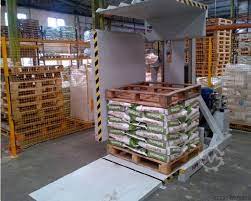
Finding the right machine is more than just a purchase. It's a strategic decision. As someone who has built a factory from the ground up, I understand that every piece of equipment must be a reliable partner in your growth. It needs to solve problems, not create new ones. So, how do you sort through the options and find a pallet inverter that truly meets the unique demands of a fast-paced, cost-sensitive market like India? It comes down to understanding the true value beyond the price tag and focusing on features that deliver real-world performance. Let's dig into the questions you should be asking.
How can you determine the true ROI of a pallet inverter beyond the initial price tag?
It is easy to look at two machines and simply choose the cheaper one. I have made this mistake myself in the past. But a low price on an invoice can hide a lot of future costs. The machine might be cheaper because it uses thinner steel, a less reliable motor, or a complicated control system that is difficult to repair. A breakdown during a critical production run can cost you far more in lost output and delayed shipments than you ever "saved" on the initial purchase.
To determine the true Return on Investment (ROI) of a pallet inverter, you must calculate its Total Cost of Ownership (TCO). This involves adding the initial purchase price to the ongoing operational costs, like energy and maintenance, and then subtracting the tangible savings it generates. These savings come from reduced labor hours for manual stacking, eliminated costs from product damage, and increased revenue from higher throughput. A machine with a strong ROI pays for itself through operational efficiency.
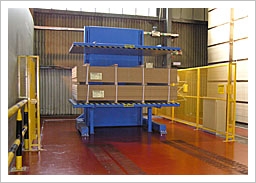
Dive Deeper: Breaking Down the Total Cost of Ownership (TCO)
Thinking in terms of TCO is what separates a good plant manager from a great one. It shifts the focus from a one-time expense to a long-term investment. Let's break down how to properly analyze this for a pallet inverter in a high-volume FMCG setting.
H3: Calculating Your Concrete Labor Savings
First, look at your current process. How many workers does it take to manually transfer a load from one pallet to another? How long does it take them? Now, multiply that by their hourly wage and the number of pallets you handle each day.
- Manual Method: (Number of Workers) x (Hours per Pallet) x (Hourly Wage) x (Pallets per Day) = Daily Labor Cost
A pallet inverter can often be operated by a single forklift driver and completes a cycle in about 60-90 seconds. The calculation becomes dramatically different. You are not just saving salaries; you are freeing up your valuable team members to work on other, more productive tasks.
H3: Quantifying the Cost of Product Damage
Every time a load is handled manually, there is a risk of something being dropped, crushed, or contaminated. For FMCG companies, packaging integrity is critical. Calculate your current rate of damage. What percentage of goods are written off each month due to handling errors?
- Damage Cost: (Value of Goods per Pallet) x (Damage Rate %) = Cost of Damage
A pallet inverter clamps the load securely on the top and sides before gently rotating it. This controlled process virtually eliminates handling-related damage. The savings here go directly to your bottom line.
H3: The Hidden Costs of Downtime and Maintenance
A lower-quality machine might seem like a win upfront, but its true cost emerges over time. More frequent breakdowns mean more production stoppages. You need to factor in the cost of lost production per hour. Furthermore, complex or proprietary parts can be expensive and slow to acquire, especially in a market like India. A machine built with simple, robust, and commonly available components (like standard hydraulic valves or Siemens/Schneider electronics) will have lower maintenance costs and less downtime over its life.
| Cost Factor | Manual Stacking | Low-Cost Inverter | Robust SHJLPACK Inverter |
|---|---|---|---|
| Initial Investment | $0 | $15,000 | $25,000 |
| Daily Labor Cost | $200 (4 workers x 2 hrs) | $25 (1 worker x 0.25 hrs) | $25 (1 worker x 0.25 hrs) |
| Annual Labor Cost | $60,000 | $7,500 | $7,500 |
| Est. Annual Damage Cost | $10,000 | $5,000 (unreliable) | $500 |
| Est. Annual Maintenance | $0 | $2,000 (frequent issues) | $500 (preventive) |
| Est. Annual Downtime Cost | $0 (process is slow, not down) | $8,000 (unplanned stops) | $1,000 (planned maintenance) |
| 3-Year TCO | $210,000 | $79,500 | $53,500 |
Note: The numbers above are illustrative examples to show the calculation method. As you can see, the machine with the higher initial price tag can easily become the most cost-effective solution over time.
What specific features are non-negotiable for a pallet inverter in a high-volume FMCG environment?
In an FMCG plant, your equipment is expected to perform under constant pressure. The production line doesn't stop, and your logistics must keep pace. A pallet inverter in this environment is not a luxury; it is a critical piece of infrastructure. If it fails, the entire outbound flow of your factory can be paralyzed. This can lead to missed delivery slots with major retailers, spoiled goods, and a logistical nightmare.
For a high-volume FMCG environment, the non-negotiable features of a pallet inverter are a heavy-duty steel frame for durability, simple and reliable controls for ease of use, and adjustable clamping pressure to handle diverse products safely. Essential safety systems, like light curtains and physical guarding, are also mandatory to protect your operators and comply with modern factory standards. The machine must be a workhorse, not a delicate instrument.
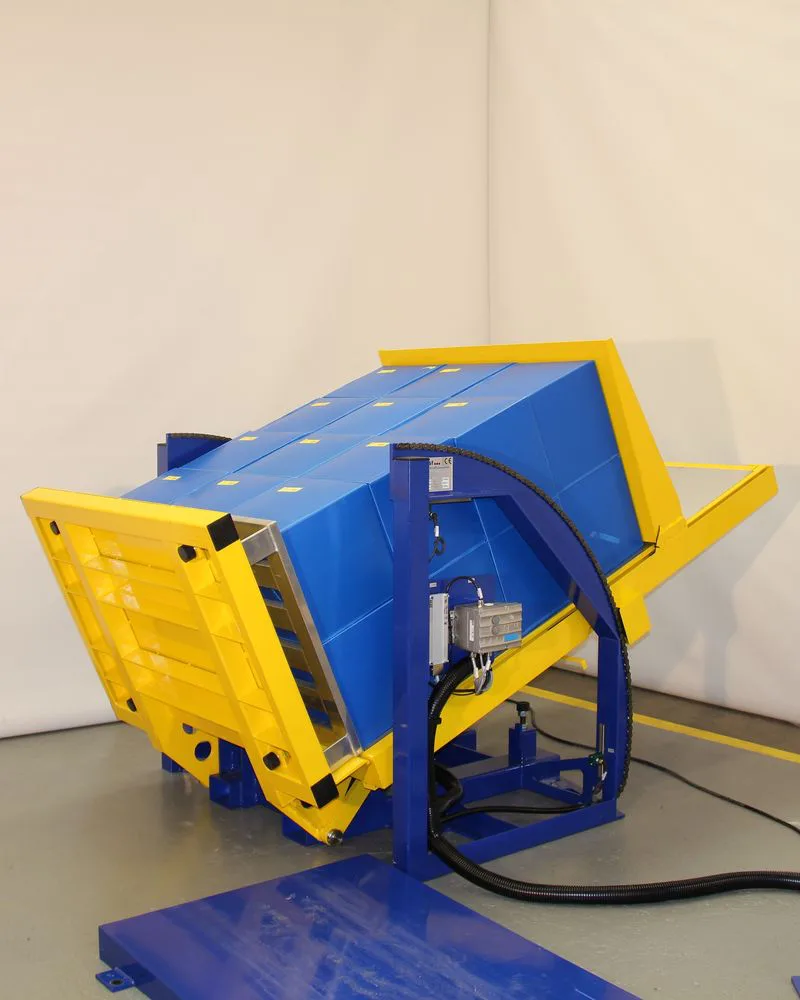
Dive Deeper: Engineering for Reliability and Safety
When I started my own factory, I learned a valuable lesson: the design details of a machine determine its long-term success. A machine that is engineered for the reality of the factory floor will always outperform one that just looks good on paper. Here’s what to look for in a pallet inverter destined for a demanding FMCG plant.
H3: The Foundation: A Heavy-Duty Build
The core of any reliable pallet inverter is its frame. Look for machines constructed from thick-gauge structural steel. Check the quality of the welds. Are they clean and continuous? A robust frame is what allows the machine to withstand the dynamic forces of clamping and rotating heavy loads, cycle after cycle, year after year. The hydraulics or electric motors should be from internationally recognized brands. This ensures not only reliability but also the availability of spare parts down the road. It’s the difference between a machine that lasts five years and one that lasts fifteen.
H3: The Brains: Simple, Reliable Controls
In a busy factory, you need equipment that is easy to operate. A pallet inverter with a complex control panel filled with confusing options is a recipe for errors and downtime. The best systems use simple, intuitive controls—often just push buttons or a simple joystick. From a maintenance perspective, simplicity is also key. A machine with straightforward electrical and hydraulic circuits is much easier for an in-house technician to troubleshoot and repair. I always advise my clients to avoid overly complex or "proprietary" control systems. They create a dependency on the original manufacturer for even minor issues.
H3: The Hands: Gentle but Firm Clamping
FMCG products can range from sturdy cans of beverages to delicate boxes of biscuits. The pallet inverter's clamping system must be able to handle this variety. A key feature is adjustable clamping pressure. This allows the operator to set the right amount of force to secure the load without crushing the packaging. Some advanced systems use pressure sensors to automatically apply the minimum force necessary. This single feature is critical for preventing product damage and is a hallmark of a well-designed machine.
| Feature | Why It Matters for High-Volume FMCG | Questions to Ask a Supplier |
|---|---|---|
| Frame Construction | Withstands 24/7 operation and heavy loads without flexing or failing. | What is the thickness of the steel used in the frame? What is the machine's maximum load capacity? |
| Control System | Ensures easy operation, minimal training, and straightforward maintenance. | Do you use a standard PLC (e.g., Siemens, Allen-Bradley)? Can my technicians easily troubleshoot it? |
| Clamping Mechanism | Prevents product damage by applying the correct force for different types of goods. | Is the clamping pressure adjustable? How precise is the adjustment? Can it handle my lightest and heaviest loads? |
| Safety Systems | Protects operators from moving parts, reducing accident risk and ensuring compliance. | Does the machine come standard with safety light curtains or area scanners? Are all pinch points guarded? |
| Cycle Time | Determines the machine's throughput and its ability to keep up with the production line. | What is the average cycle time for a 180-degree inversion, including loading and unloading? |
How does a pallet inverter help meet changing export and hygiene standards?
Your production process might be perfect, and your domestic logistics seamless. But the moment you decide to export, or when you need to improve hygiene in your plant, you face a new set of challenges. Many countries, under the ISPM 15 standard, require that wooden pallets be heat-treated or fumigated to prevent the spread of pests. Similarly, in food, beverage, and pharmaceutical production, maintaining a clean environment is non-negotiable. Wooden pallets are often not allowed in these "clean zones."
A pallet inverter is a critical tool for meeting changing standards because it creates a clean, fast, and automated break-point in your supply chain. It allows you to transfer goods from standard in-house pallets onto export-compliant ISPM 15 pallets just before shipping. It also enables you to switch from external "dirty" pallets to hygienic plastic or metal pallets before goods enter a GMP-controlled production or storage area, minimizing contamination risks.
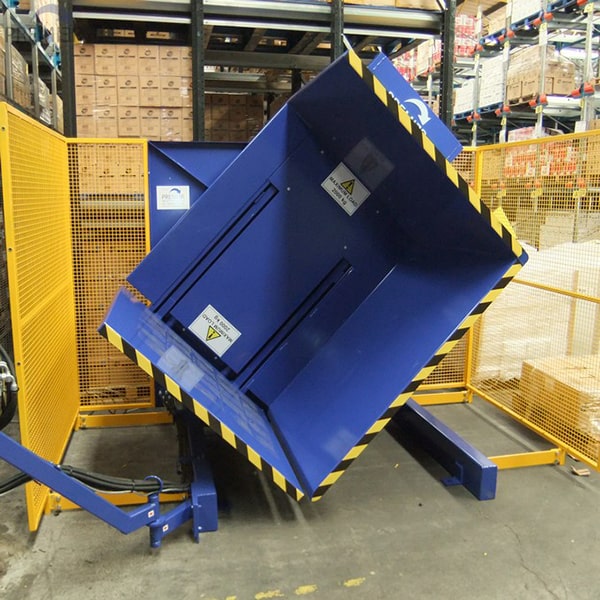
Dive Deeper: The Pallet Inverter as a Gateway for Compliance
Think of a pallet inverter as a gatekeeper. It stands between different zones of your operation, ensuring that only compliant loads pass through. This capability is becoming more important every year as global and internal standards become stricter.
H3: Mastering Export Compliance with ISPM 15
The International Standards for Phytosanitary Measures No. 15 (ISPM 15) is a global standard to prevent the international transport of diseases and insects. It requires that wood packaging material be debarked and then heat-treated or fumigated. Managing a separate inventory of these treated pallets for your entire warehouse is expensive and complicated. The smart solution is to use standard, low-cost wooden pallets for all internal movements. Then, right at the dispatch bay, use a pallet inverter to switch the load onto a fresh, ISPM-15 compliant pallet just before it's loaded onto the truck or container. This "just-in-time" pallet exchange is the most cost-effective way to guarantee compliance for every export shipment.
H3: Upholding Hygiene in GMP Environments
In the food, beverage, and pharmaceutical industries, Good Manufacturing Practices (GMP) are law. A major focus of GMP is preventing cross-contamination. Wooden pallets, which can splinter, absorb moisture, and harbor bacteria, are often a primary concern. Many FMCG plants establish hygiene zones where only plastic or stainless steel pallets are allowed. A pallet inverter is the perfect tool to manage this transition. A truck delivers goods on a wooden pallet to the receiving dock. Before the goods enter the "low-risk" or "high-care" area, the entire load is run through an inverter to be transferred to a sanitized plastic pallet. This creates a clear physical barrier against contamination. For these applications, you can even get pallet inverters made from stainless steel for easy washdown.
H3: The High Cost of Getting It Wrong
What happens if you ignore these standards? An export shipment on a non-compliant pallet can be quarantined or even destroyed by customs authorities in the destination country. The financial loss, reputational damage, and loss of a customer can be devastating. Failing a GMP audit can lead to fines, forced production shutdowns, and product recalls. A pallet inverter is a relatively small investment when viewed as an insurance policy against these catastrophic risks.
| Pallet Type | Pros | Cons | Typical Use Case |
|---|---|---|---|
| Standard Wood | Very low cost, widely available. | Can splinter, absorbs moisture, not ISPM 15 compliant. | Internal warehouse movements, domestic shipping. |
| ISPM 15 Wood | Compliant for export. | Higher cost than standard wood, needs tracking. | Final pallet for international sea/air freight. |
| Plastic (HDPE) | Hygienic, durable, easy to clean, long life. | Higher initial cost, can be slippery. | Food & Pharma cleanrooms, closed-loop systems. |
| Metal (Steel/Alum.) | Extremely durable, high load capacity. | Very high cost, heavy. | Specialized heavy-duty or sterile applications. |
Conclusion
Choosing the right pallet inverter is a strategic move for efficiency, safety, and compliance. Prioritize total cost of ownership, robust features, and find a partner who understands your long-term goals.
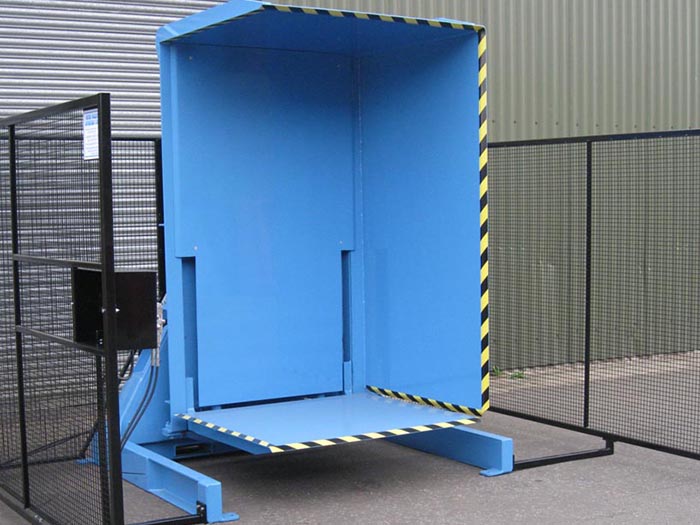
My Insights
Javier, I read your profile, and I see a lot of my own journey in yours. Starting in engineering, learning the industry from the ground up, and then taking the risk to build your own company. We both understand that when you own the factory, every decision, every investment, rests on your shoulders. You are not just buying a machine; you are investing in the stability and future of the business you built and the people who depend on it.
You face challenges with aging equipment and market fluctuations. A reliable, efficient pallet inverter directly addresses this. It replaces an old, unpredictable manual process with a modern, automated one. When the market is strong, it helps you maximize throughput to meet demand. When the market is volatile, its efficiency helps you lower your cost per unit, protecting your margins. It is a solid, predictable component in an often-unpredictable industry.
You are looking for a strategic partner, not just a supplier. This is the core belief behind SHJLPACK. I didn't start this platform just to sell machines. I did it to share the knowledge I gained over 25 years so that leaders like you can make the best possible decisions. My goal is to provide a total solution, which includes understanding your specific challenges—from energy costs to digital transformation—and recommending equipment that becomes a profitable part of your long-term strategy. The right pallet inverter is an investment in operational excellence. It's a step toward the 95% uptime and 8% cost reduction you are aiming for.


